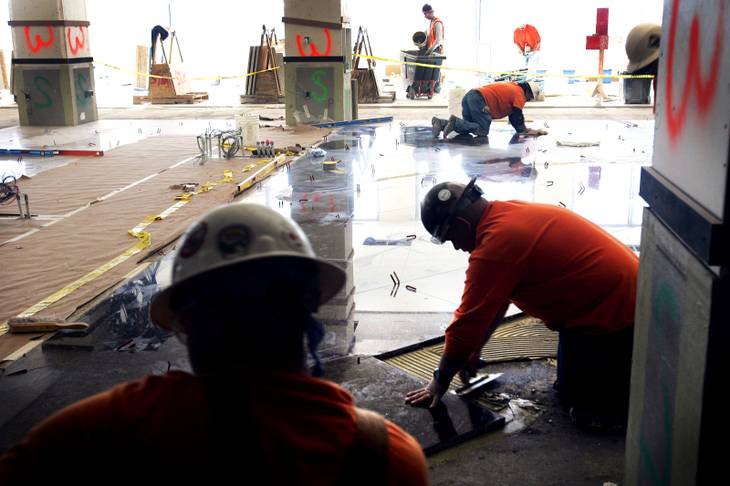VEGAS INC
More people are moving to Nevada, but at the present pace, it would take nearly a decade to absorb the vacant housing inventory in Las Vegas, according to a report from the Associated General Contractors of Las Vegas.
The group’s second quarter report said 4,676 people surrendered out-of-state driver’s licenses at local DMV offices in May, a 24.5 percent increase over May 2010, meaning more people moving in.
At the same time, electric meter connections at homes rose 0.9 percent year-over-year for three consecutive months and public school enrollments were higher as well.
“Good news to be sure, however, at these modest rates of growth, it would require nearly a decade just to absorb the vacant housing inventory on the market today,” the report said.
In what is not a big change from previous statements, the group released a pessimistic second-quarter report on the state of the Southern Nevada construction industry.
“The piling on of economic challenges continues to test the resiliency of the nation’s economy,” the report said. “First, it was spiking gasoline prices, and then a Japanese tsunami with nuclear implications that shook the world. Later a European debt crisis took center stage and on Aug. 5, S&P downgraded U.S. debt from AAA to AA+ following a less-than-comprehensive agreement by Congress that increases the debt ceiling and carves back spending.”
The construction industry encourages government spending on capital projects to generate jobs and stimulate the economy, but with the local, state and federal governments cutting back on spending, the industry faces continued tough times, the report said.
“We know of no time in history when the challenges confronting the Southern Nevada construction industry have been greater,” the report said.
“Unfortunately, if we stay the current course, the 72,600 construction workers that have lost their jobs during the past three years may only be a harbinger of the challenges to come,” the report said.
Construction is unlikely in the private sector, given that retail vacancies stand at 10.1 percent and office and industrial vacancies remain elevated as well, the report said.
“What is abundantly clear is that we built too many houses, office buildings, industrial parks and retail centers,” the report said. “Today, residential and non-residential vacancy rates are at or near the highest level on record and the region ranks among the nation’s highest in terms of foreclosures and bankruptcy. What is much less clear is how this sector regains solid footing,” the report said.
